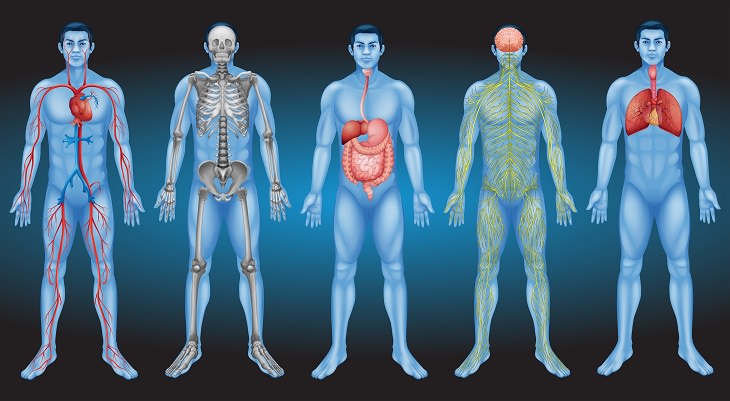31 August 2017
Worrying is an unnecessary evil when it comes to your mental health. Some consider it simply a bad habit that can be unlearned with practice. Some think that worrying may serve a purpose for the brain by helping us to learn from past experiences and prepare for new ones. Whether good or bad, worrying occupies our brain by focusing on an uncertain future that we can’t control.
It is said that depression is focusing on past events that you wish you could change, and that worrying is focusing on future events that you have no control over. It could also be said about worrying that you only think you have no control over the future when you can actually choose to take action to help prepare for whatever it is you are worried about. In this article, we will look at active ways that you can help train your brain to stop worrying.
When you are training your brain to stop worrying, this one technique is said to be the most valuable. If your brain is keeping you up at night by thinking about something, put it down on paper or electronic format. Doing so lets your brain breathe a mental sigh of relief by no longer having to spend energy trying to remember these details. If you’re worrying about what to serve for a gathering of friends, write down ‘What to serve?’
Writing it down also is a way for you to put your brain on notice and tell your brain ‘This is important enough to write down.’ Your brain has now been alerted to put resources toward solving this problem rather than being worried or having to remember the important thing to worry about.
Why write it down? Researchers now have evidence that chronic worriers may be chronic problem avoiders too. Scientists in the journal Anxiety, Stress & Coping gave worriers an opportunity to write down three possible outcomes for the situation they were worried about, then they analyzed their answers for practical solutions. The scientists say ‘When participants’ problem elaborations were rated for concreteness, both studies showed an inverse relationship between degree of worry and concreteness: The more participants worried about a given topic, the less concrete was the content of their elaboration. The results challenge the view that worry may promote better problem analyses. Instead, they conform to the view that worry is a cognitive avoidance response.‘
Meditation can help train your brain to stop worrying. Researchers in the journal Psychosomatic Medicine studied the effects of meditation and found that meditation is particularly good for reducing cognitive anxiety, or worrying. Although some people believe that they do not have time to meditate, meditation is as easy as choosing to close your eyes right now for 30 seconds or longer. The act of choosing to tune out other sources of stress is an active step to train your brain to stop worrying.
A few moments where you consciously choose to avoid any non-natural noise in your life will allow you to get centered around what is most important to you, now and in the future. Worrisome thoughts may come to you while you meditate, and this is normal. Those who have mastered the art of brain training to stop worrying recommend observing worrisome thoughts as they enter the mind and simply watching them pass like clouds on a breezy day.
Worry is how your brain learns to survive by deciding to activate the fight or flight system. If a cougar jumps out at you, you instantly feel a rush of adrenaline, and this fear response is the same thing that is happening to your body when you worry, just at a much lower level over a longer period of time.
The same study in the journal Psychosomatic Medicine found that exercise, on the other hand, is good for when your body feels the symptoms of anxiety, like jitteriness. If your body feels less of the physical symptoms of stress, your mind will interpret that there must be less to worry about because the body is not in a state of heightened arousal.
Exercise seems to give the body a secondary reason for the rapid heart rate and perspiration that we may feel on a small level when we worry. Exercise can help lower blood pressure, which is another physical symptom of stress in the body. If you can identify that you are worrying, go for a 5-10 minute walk, outside if possible. Appreciate the sights and sounds of nature while focusing on the motion of your limbs and the breaths that you take.
29 August 2017
Your body really is the sum of its parts. If one part of your body isn’t working properly, the entire system will get bogged down. But why do we treat the symptoms instead of going to the root of the problem? If a cog in the machine breaks, we fix it, but instead of shutting everything off and putting a patch on an integral part of the chain, why don’t we make sure the chain is strong? Why don’t we ensure that the body is well maintained, oiled, and always topped up with the proper fuel?
Well maintained means rested. Well-oiled means hydrated. Gassed up with proper fuel means eating a diet that is made up of the right foods – alkaline-forming foods. These foods help to create and maintain a healthy pH in the body.
The majority of diseases love acidic conditions and cannot exist when the pH level (the concentration of hydrogen ions in your blood) in the body is alkaline. The pH scale ranges from 0-14, with 0 being highly acidic, and 14 being highly alkaline.
4. Prepare meals intelligently. Combine acidic foods with alkaline foods in order to create a meal that has a perfect balance.
5. Drink 1-2 glasses of apple cider vinegar and water each day. Simply mix 1-2 tablespoons of apple cider vinegar with 8 ounces of water.
8. Drink a glass of warm lemon water in the morning. To make this drink, juice half a lemon and add it to 8 ounces of warm water. Drinking this first thing in the morning will rid your body of excess acids, creating an alkaline state. The water should always be warm as this will put the least amount of stress on your gut.
9. Eat foods that are rich in potassium. Such foods include lemons, honey, bananas, sweet potatoes, and raw, natural yogurt.
10. Mix 1-2 teaspoons of cream of tartar with 8 ounces of water. This will help your body form an alkaline state, and is especially good when it comes to calming nausea, relieving a headache, or overcoming shock.
11. Drink lots of water every day. This is the best way to ensure that your system is kept well oiled. Drinking water will help you to eliminate waste from your body. You should aim to drink 7-8 glasses of water a day.
12. Take digestive enzyme supplements. This will help to balance your pH levels and help your body to overcome acidosis. The pancreas is the organ that is mostly responsible for digestive enzyme production, so if your pancreas is not functioning properly, your natural enzyme level will not be where it needs to be.
13. Get active. Exercise can help remove the acidic waste that your body naturally creates, creating a more favorable alkaline environment. Even 5 minutes of brief walking can make a big difference, so don’t assume that you need to exercise for an hour to reap any benefits.
14. Snack on raw, unsalted almonds. These nuts are full of natural alkaline minerals such as calcium and magnesium, which help to balance out acidity, while also balancing blood sugar.
14. Snack on raw, unsalted almonds. These nuts are full of natural alkaline minerals such as calcium and magnesium, which help to balance out acidity, while also balancing blood sugar.
There are a load of external reasons for weight gain, but we definitely should not forget about the role of metabolic hormones. If you have a healthy diet and do plenty of exercise, yet still cannot seem to shake off that extra weight, then you might have an internal problem. Below you can find four hormone-related reasons for weight gain.
The adrenal glands are responsible for the fight-or-flight response to stress. If your body is stressed out too much, you may start to develop a hormonal imbalance, leading to different dysfunctions. Furthermore, adrenal glands also generate cortisol, a stress hormone, an excess of which results in abdominal weight gain.
• Fat deposits in the abdominal and waist areas
• Fullness of the face and neck, with relatively thinner arms and legs
• Increased blood pressure
• High blood sugar, mood swings, and weak muscles.
• Fullness of the face and neck, with relatively thinner arms and legs
• Increased blood pressure
• High blood sugar, mood swings, and weak muscles.
The liver is one of the body’s most important organs, and when it starts to malfunction, belly fat will start to accumulate.
The thyroid is responsible for determining the amount of energy that is used by your body. If your thyroid starts to work improperly, you’ll gain weight even if you have reduced your energy intake.
• Lasting fatigue and weight gain
• Weak muscles and lax skin
• Depression
• Hair loss
• Decelerated heartbeat
• Weak muscles and lax skin
• Depression
• Hair loss
• Decelerated heartbeat
This is characteristic of women with a hormonal imbalance. All carbohydrates that are consumed by women are transformed into fat deposits. Therefore, no matter how healthily a woman with a hormonal imbalance eats, she’ll still gain weight.




















